Considerations on the definition of Psychological Warfare
Psychological warfare is not new; it has been used since the beginning of time. Simply with the emergence of science it has been theorized, and has been able to be applied more conscientiously thanks to the emergence of new communication technologies. Vikings and Mongols spread rumors and stories about their ferocity to intimidate their opponents before facing battle; the Romans used the humiliating defeat of Carthage to warn of what it meant to face Rome, it was defined as Carthaginian Peace to the peace imposed after the humiliation in defeat [1] . It was a clear psychological message for those who dared to rise up against Rome.
The matrix of psychological warfare is political warfare. As defined by Paul M. A. Linebarger [2]: Political warfare (also called "crisis diplomacy" or "war of nerves" or "dramatic intimidation diplomacy") consists of framing national policy in such a way as to facilitate propaganda or military operations, whether with respect to direct political relations of governments with each other, or with respect to groups of people who have a political character [3].
Linebarger continues; "In World War I, psychological warfare was employed by means of political warfare through combat propaganda [...] The psychological warfare of the Allies was based pre-eminently on the political warfare developed by President Woodrow Wilson" [4] .
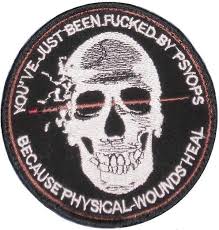 Therefore, psychological warfare is subordinate to political warfare, and both must be defined and synchronized to achieve the desired objectives [5] . US Army Colonel Alfred H. Paddock, Jr[6]. defines psychological warfare as the previously "planned use of communications to influence human attitudes and behavior. It consists of political, military, and ideological actions aimed at creating in selected human groups behaviors, attitudes, and emotions that support national objectives[7].
Therefore, psychological warfare is subordinate to political warfare, and both must be defined and synchronized to achieve the desired objectives [5] . US Army Colonel Alfred H. Paddock, Jr[6]. defines psychological warfare as the previously "planned use of communications to influence human attitudes and behavior. It consists of political, military, and ideological actions aimed at creating in selected human groups behaviors, attitudes, and emotions that support national objectives[7].
In more detail, Paddock explains that psychological warfare encompasses those activities planned and carried out to influence the opinions, emotions, attitudes and behavior of the enemy, the indigenous population and the neutral, or foreign friendly groups to support the nation's objectives [8] .
The English politician Lord Arthur Ponsonby wrote that psychological power is as important as military power, and that the morale of civilians and soldiers must be controlled. Ponsonby pointed out that the active players in the rear must never become demoralized; one must exaggerate victories and draw hate from defeats. All this by injecting propaganda into the public mind [9].
Ponsonby said that when emotions and prejudices are part of the judgment, the testimony of the human being becomes useless, but in times of war it is a conclusive testimony. It was clear that the public can be emotionally manipulated[10].
Paul Linebarger gives us more concrete elements of psychological warfare; "psychological warfare involves the use of propaganda against an enemy, along with military operational measures that can complement the propaganda. Propaganda can then be described as organized persuasion by non-violent means [11].
Professor Scott McDonald of the School of International Relations at the University of Southern California also recalls that within psychological warfare, propaganda is essential, and the most effective propaganda combines entertainment, education, and persuasion in such a way that the entertainment attracts the audience, while the educational part prevents the underlying propaganda from being noticed, even if it has persuasive overtones [12] .
Lieutenant Colonel Manuel H. Gelfi states: "Propaganda is an art and, as such, must be in the hands of the artist. As an artist, he must possess a series of conditions for the exercise of his art and as first and foremost, he must have absolute knowledge and conviction of what he wants or of the cause or causes he defends. It is not possible to spread and even less to inculcate a cause, if the person who does it is not firmly convinced and with ample knowledge of what he wishes to transmit" [13] .
With these definitions, we can see psychological warfare as the induction of thoughts and behaviors through the manipulation of information affecting the emotions and moral state of all those audiences exposed to the propaganda message. All this with the aim of achieving that the thoughts and behaviors of the audience reached are favorable to the interests of the promoter of the psychological operation.
Classical psychological warfare is developed by applying psychological techniques in the design of propaganda that is distributed through different communication channels.
Psychological Warfare in Conflict
Psychological warfare since World War I was perfectly organized, although not synchronized between allied countries. The Committee for Public Information (CPI) was established in August 1917 in the United States. The objective was the creation and dissemination of propaganda to justify the country's entry into World War I; they disseminated propaganda both to the American population and to the populations of neutral or conflict-affected countries.
His methods of disseminating propaganda focused on creating news, publishing books and producing films. The ICC, also known as the Creel Committee, coordinated with the political and military organs of the United [14] States.
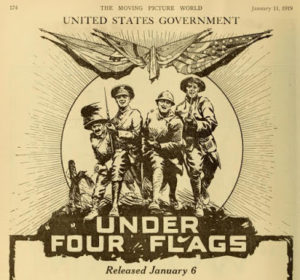
The American propaganda body had two sections, one public and one military; the Committee on Public Information under the direction of George Creel as the public section, and the Propaganda Section (or Psychological Section), an agency of the US army under the direction of Captain Herber Blankenhorn [15] .
As soon as the Creel Committee was established, missions were opened in a number of European and Spanish-speaking countries; their mission was to place American propaganda in all the media systems of the host countries [16] . The manager of American propaganda in Spain was Frank J Marion, president of the Kalem Company, and an eminent figure in the American film industry [17] .
Spain was one of the epicentres of German propaganda in Europe, therefore one of the objectives of the Creel Committee. The French and English propaganda was under heavy observation by the censors, but Mr Marion had no problem in being able to show the propaganda films he brought with him; he was able to exhibit them both in schools and in public squares.
Propaganda became so important in the development of the war that the French and British embassies in Spain sent out envelopes with propaganda directly to the media, and soon the embassies received the bills for the publication [18] .
Mr. Marion was able to establish his line of propaganda in the Spanish media thanks to the Fabra news agency [19] , with which he collaborated throughout the campaign by injecting pro-US propaganda into the Spanish media [20] . The painter Joaquín Sorolla also collaborated with American propaganda by sponsoring a tour of Spain for the exhibition of paintings by Joseph Pennell. The propaganda was done by pretending to be a cultural event to avoid censorship [21] .
For his part, the journalist and writer Wenceslao Fernández Flórez drew in his novel "Los que no fuimos a la guerra" the atmosphere that existed in Spain under the psychological warfare of the warring factions.
At the beginning of World War I, the English had one of the best communications systems, including underwater communications cables. In spite of being a communication system created for commercial reasons, it was easily transformed for warlike uses.
At the end of the war the English propaganda system had been divided into two sections; One was the Ministry of Information (MoI), led by Lord Downhamy, with the aim of carrying out psychological warfare on civilians outside England. The other propaganda body was the National War Aims Committee, for the purpose of carrying out psychological warfare on civilians within England.
The British were pioneers in coordinating political warfare with propaganda news and in linking politicians with the public relations of the armed forces [22] . The crude manipulation of news for propaganda purposes had many detractors, both in England and in the United States, but the manipulation of information served to justify the war and to create favorable opinion groups.
In England one of the main detractors of psychological warfare techniques and their associated propaganda was Arthur Ponsonby. Ponsonby denounced that one of the main tools to capture minds adept at the war policies of governments was the propaganda of atrocity.
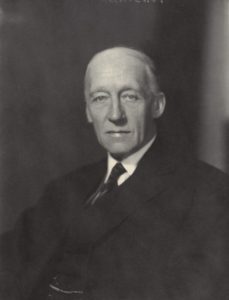
The atrocity propaganda told bloodthirsty stories about the enemies, thereby radicalizing the national populations into pro-war positions, as well as positioning the neutrals [23] . The former professor of international communications, Philip Taylor, like Ponsonby, tells us how stories emerged in the media of the countries in conflict about factories that used dead bodies to make soap, crucified soldiers, nuns and children who were raped, and about so many other unspeakable acts carried out by the enemy [24] .
One of the basic principles of atrocity propaganda is that it demands more atrocity from those who are supposed to have committed atrocious acts [25] . Atrocity propaganda generates hatred; it is propaganda to create enemies for your enemies. During the First World War this type of publicity was empirically tested in the media, its effects were well known for later uses; it was scientific propaganda [26].
The Germans were well aware of what was going on in the field of psychological warfare, but they did not have the capacity to keep up with their opponents. As reflected by U.S. Army Sergeant Major Herbert A. Friedman, on his website specializing in psychological warfare, in World War I a report by the German Narhrichtenblatt der 18 Armee stated: "In the sphere of pamphlet propaganda, the enemy has defeated us... the enemy has defeated us, not as man against man on the battlefield, bayonet against bayonet; no. He has defeated us with bad content, bad printing, on paper without quality; with that they have crippled our forces" [27] .
Adolf Hitler also realized the power of propaganda in the first world war. He dedicated a chapter of Mein Kampf to analyzing the propaganda of World War I, where he praised both British and American propaganda [28].
Colonel William Donovan of the US Army was impressed with the British Army's ability to combine sabotage operations with propaganda, subversion and guerrilla warfare. The British combined these activities in Political Warfare Executive and Special Operations Executive agencies.
For the second world war Franklin Roosevelt in 1941, following Colonel Donovan's suggestion, establishes the Office of Coordinator of Information (COI), with Donovan as director. This was the seed of the Office of Strategic Services (OSS) [29] and the Office of War Information (OWI), the latter being responsible for organizing psychological warfare.
General Eisenhower succeeded in February 1944 in unifying the various agencies in charge of propaganda and psychological warfare under the Psychological Warfare Division (PWD) [30] . Thus the United States already had centralized and specialized organs to generate and apply propaganda.
The Normandy landing is a milestone in the collective memory of humanity. Few people know that, along with the soldiers, legions of propaganda contents landed in Europe with the allied army. From books to magazines, through countless Hollywood movies; the aim was to justify the military presence and the subsequent established order. And the aim of the propaganda material was the European civilian population, not the enemy soldiers. The propaganda materials were produced by the OWI and the MoI [31] .
For the propaganda to have an effect, the social group on which it is to be applied must be analyzed. One of the basic requirements of psychological warfare is to know the morale of the enemy. In World War II, eminent researchers such as Paul Lazarsfeld and Harold Lasswell developed tools for the systematic analysis of foreign texts and broadcasts in order to provide the intelligence services with the most accurate reports. These researchers extended the analysis of the national cultural environment to investigate elements more related to the individual and to psychiatry [32] .
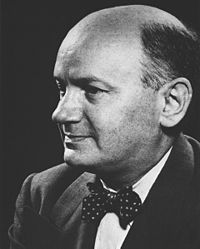
In the IIGM, for the Americans, psychological warfare was about changing regular military operations to the use of mass media. For the Germans it was a political and military strategy, for the Germans it was a change in the way of making war [33].
Abraham Maurits (Joost Meerloo) in his work Total War on Human Mind explains to us what were the techniques used by the National Socialist regime to influence the emotions and aptitudes of the population of the occupied territories. The first way of influencing the Dutch population during the occupation was through propaganda, for those who did not work the propaganda induced the emotion of fear.
Maurits explains that the technique of propaganda was based on hypnosis, on continuously repeating simple slogans through the radio, the press or posters on the walls. The Germans sought to suggest the emotions of the masses in their entirety [34]. The National Socialist government had taken note of the importance of psychology after the first world war.
Linebarger believed that a nation's media system would remain uncoordinated even in time of war, and that the privately owned media system could be a good platform for applying psychological warfare through veiled censorship, thus preventing enemy propaganda from circulating on the home front. News could be turned into propaganda if the source of the news had that intention. Psychological warfare is a very important diplomatic weapon since it is a basic element of strategic deception [35].
Linenbager said that the propaganda broadcast in the national media would be a decoy for the foreign intelligence services. Linenbarger lists the volume of psychological warfare developed by the United States in World War II outside its borders:
"Big jobs require big organizations. Eight billion leaflets were launched in the Mediterranean and European theaters of operations under General Eisenhower alone. That was enough to have given every man, woman and child on earth four pamphlets each. And this fact, great as it is, does not include pamphlets thrown in all the other theaters of war, by ourselves, by our allies or by our enemies. That doesn't include pamphlets thrown by B-29 planes in Japan, on which hundreds of tons of paper were thrown. Great American newspapers were developed, edited, printed and delivered to our allies and to enemy troops. One of these, Parachute News (Rakkasan), had a circulation of two million copies; this was in the Pacific Southwest. [...] To get closer to the enemy, the United States printed pamphlets, cartoons, brochures, newspapers, posters, books, magazines. In black (propaganda) operations, enough falsehoods were perpetrated to keep the FBI busy for a thousand years. Films in all forms (commercial, amateur, in all formats; sound and silent, even magic lantern slides) went out all over the world. Radio talked about all the waves in almost every language and code; speakers, souvenirs, candy, matches, nylon stockings, guns that could be hidden in your mouth, sewing thread, salt, phonograph records and baby pictures broadcast all over the world. Much of this was a necessary expense. In the greatest war expense, it seems almost frugal when compared to the results that are believed to have been achieved"[36]
It is clear that the United States took psychological warfare very seriously in the conflict that began in 1941. And it is a trend that was fixed in the way this country made political warfare. Alfred Paddock explains that even in peacetime there are psychological warfare operations.
Paddock adds that only 10% of psychological warfare operations are carried out during the course of the conflict, and that the increase and importance of psychological warfare operations allowed these combat units to distance themselves from the limitations of special operations [37]. The author suggests that psychological warfare must be unrestrained in its development.
Psychological warfare as a tool in peace
On April 25, 1944 the still general, and future president of the United States, Dwight D. Eisenhower declared that "Public Opinion wins wars". In October 1945, General Eisenhower wrote to General McLure, director of the PWD, telling him that psychological warfare had won a place of honor in the army's arsenal[38]. Clearly, psychological warfare operations seek to convey selected information to targeted audiences in order to influence their behavior over government policy.[39]
Psychological warfare ceased to be a weapon against the enemy and became a political tool of the government against the civilian population itself. In fact, it was the Truman and Eisenhower administrations that created propaganda institutions in times of peace. Propaganda through "war of words" was an integral part of presidential policy and a cornerstone of the construction of the Cold War [40] .
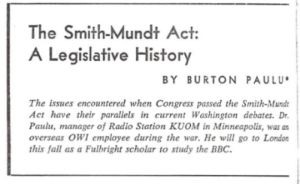 With the Smith-Mundt Act in 1948, the first peacetime propaganda agency in the United States was legalized, allowing government propaganda to be applied to the news broadcast by the private media with the aim of justifying the American positions that crystallized the Cold War [41]. In 1952 the Psychological Warfare Center was established [42] .
With the Smith-Mundt Act in 1948, the first peacetime propaganda agency in the United States was legalized, allowing government propaganda to be applied to the news broadcast by the private media with the aim of justifying the American positions that crystallized the Cold War [41]. In 1952 the Psychological Warfare Center was established [42] .
In 1953, when OWI was disbanded and the U.S. International Information Agency was established, OWI staff became part of the State Department or the new agency; American public diplomacy had its own government agency and a whole film industry at its service [43]. The psychological warfare against the American population could be seen emerging from the rear through films, comics, books and other cultural material; it had the same structure as communist propaganda.[44].
The U.S. House of Representatives, specifically the House Un-American Activities Committee, had in its midst Edward Hunter, a well-known journalist and fervent anti-communist, who claimed that communist psychological warfare was being developed in the United States, and that pro-communist brainwashing was being induced in Americans by the intellectual elites. Hunter argued that one of the tactics used was double-talk, a tactic described by George Orwell in his book 1984[45].
The justification for domestic propaganda was provided by allegations similar to Hunter's. According to the Institute for Propaganda Analysis, an institution created in the interwar period, Hunter's appearance can be framed as testimony propaganda. This type of propaganda in front of American authorities can be documented several times during peacetime.
Psychological warfare as public diplomacy
On the foreign front, the Marshall Plan for Europe has promoted an increase in the circulation of American newspapers and magazines [46] . Rampton and Stauber reflect that there have been detailed operations of psychological propaganda carried out by the American government in the 1950s: To influence public opinion in the Middle East, books, pamphlets, films, posters, music, and diverse propagandistic materials were published.
According to the National Security Council (NSC), everything was due to psychological reasons [47] . Other authors have revealed different forms of propaganda on the part of the US authorities. For example, in El Salvador, colorful comics were used to reach the illiterate parts of society. The comics showed left-wing guerrillas committing atrocities and right-wing rich people abusing their power [48].
The use of images to reach the most illiterate layers of society was already used by the Creel Commission when the picture department was established. The techniques of psychological warfare and the creation of associated propaganda have always taken into consideration national cultural variables and educational variables of the population.
The concepts of propaganda and psychological warfare have been replaced by new concepts such as information warfare or psychological operations. It is a semantic distinction for mostly analogous concepts [49]. Nevertheless, the semantic evolution of psychological warfare has brought with it its conceptual and practical nuances.
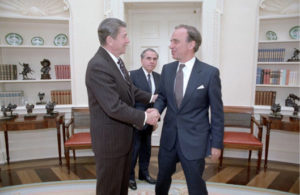
The new concept involving psychological warfare is strategic influence; this field includes public affairs, political warfare, public diplomacy, and psychological operations. Strategic influence is the combined use of all these factors[50]. One of the main functions of strategic influence is perception management. This tool brought strategic influence back to the presidency of Donald Reagan.
Robert Parry tells us that Reagan created a whole propaganda bureaucracy in order to manipulate the audience's perception of the issues the country was involved in internationally. Perception management reversed the images broadcast in the mind of the recipient, helping to support presidential policies [51] . Walter Lippmann has already spoken to us about how propaganda functions as a filter between reality and the receiver.
Years later the United States continued to use voluminous psychological operations in the conflicts it had opened up around the globe. In the first Persian Gulf War, the 4th PSYOP Group launched 29 million leaflets about Iraqi forces in order to encourage desertion in the ranks of Saddam Hussein's army.
At the same time, a radio program called Voice of the Gulf [52] was developed, from which Iraqi troops were bombarded with messages of happiness from alleged Iraqi soldiers who had deserted, and from which they spread affection for Islam and made a list of places to be bombed the next day; 75% of the deserters claimed to have deserted, influenced by the leaflets and the radio [53].
Following the attacks on the Twin Towers in New York on September 11, 2001, the Pentagon established the Office of Strategic Influence (OSI), which was intended to distribute information to target societies, but later allegations indicated that this was a disinformation scheme [54]. After the attack, the US government set up immediate response communications offices in London, Islamabad and Washington. A deployment of propaganda bodies similar to that which it deployed in World War I with the Creel Commission.
The aim was to induce the media in South Asia and the Middle East to adopt editorials that would counteract anti-American sentiment and be favorable to military action, this highlighting Bin Laden's link to the attacks on New York. Their functions included carrying out psychological warfare operations directly on the population of Afghanistan through radio and TV broadcasts, along with the launching of anti-Taliban leaflets [55].
The public relations firm Lincon Group was in charge of translating the Pentagon's propaganda and including it, against payment, in the different media in Muslim countries [56]. It is clear that political warfare is the trigger for information warfare, and this is a basic element of psychological warfare operations.
Since the attacks on the Twin Towers, the Pentagon has also implemented a program to insert reporters into military units, who would filter the information and turn it into news, thus becoming a valuable tool of government propaganda [57].
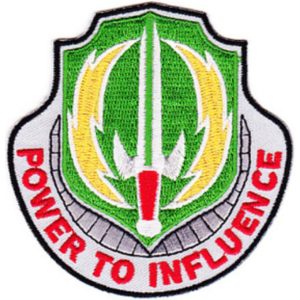
In addition to the journalists who were stationed in the military units, the Pentagon had its own "Combat Camera" team at the beginning of the 21st century, made up of soldier journalists who are dedicated to recording exclusive videos of combat and then sending the images to the most important news agencies in the world [58]. The second Persian Gulf War deployed an immense campaign of psychological warfare developed by public relations professionals.
The CIA hired public relations consultant John W. Rendon to organize campaigns to discredit Saddam Hussein inside Iraq. Rendon is a specialist in providing public relations assistance to US military operations [59]. Rendon defines himself as an information and perception warrior who uses the media to defend public or corporate interests [60].
Considerations on Eternal Theory and Practice 2.0
It can be concluded that psychological warfare has emerged from the war environment, in classical terms, and has become established on the periphery of conflicts and in times of peace. Having as audience both the population in the rear as the antagonistic population, or the neutral ones.
The investment made in analyzing the methods for psychologically influencing the social mass allowed for the development of detailed ways of preparing propaganda and refining its application. Extensive knowledge of manipulation techniques was generated during the two world wars. The investment in psychological knowledge during that period has changed the rules of social life, both in terms of thinking and in terms of organization[61].
The concept of Psychological Warfare has become blurred in a concept as broad as strategic influence. Psychological warfare has entered fully into civilian life to shape the thinking and action patterns of populations throughout the Western world and beyond. The abuse of propaganda, public relations, and the application of psychology through the media, has created and manipulated the concept of the public mind as it was appropriate at the time.
There is still a characteristic of Psychological Warfare; the receivers are audience, whether they are receivers in groups or individuals, psychological warfare counts as a transmitting channel the communication, and as a content of the communication the propaganda. The aim is still to influence the receivers through a personalized design of the information.
Web version of the article published in The Journal of the Americas, AirUniversity. For its original version follow the link
[1] MACDONALD, Scot. Propaganda and Information Warfare in the Twenty-First Century: Altered images and deception operations. Routledge, 2006. P 57-58
2] Linebarher was a Doctor of Philosophy. Professor of Asian Studies at John Hopkins University, School of Advanced International Studies. Specialist in propaganda techniques and psychological warfare. He served in the American army during World War II. He was instrumental in the creation of the Office of War Information. During the 50s and 60s he published several works of science fiction under the pseudonym of Cordwainer Smith.
[3] LINEBARGER, Paul M. A. Syllabus of Psychological Warfare. Propaganda Branch, Intelligence Division, WDGS. Washington, D.C. 1946. P 3
4] ITEM……… . P 4
[5] KLÉ, Fred C. The modern context. Political Warfare and Psychological Operations: Rethinking the US Approach, 1989, P 3-11.
6] Dr. Alfred H. Paddock, Jr. has a B.A. in political science from Park College, an M.A. and a Ph.D. degree in history from Duke University. He was commander, 4th Psychological Operations Group and was the senior psychological personnel officer in the Office of the Secretary of Defense during the 1980s.
[7] PADDOCK JR, Alfred H. Military Psychological Operations. Military Psychological Operations. Political Warfare and Psychological Operations: Rethinking the US Approach, 1989. P 45
[8] PADDOCK Jr, Alfred H. US Army Special Warfare, Its Origins: Psychological and Unconventional Warfare, 1941-1952. National Defense University Press. 1982. P 2
[9] PONSONBY, ARTHUR. Falsehood in wartime: Propaganda lies of the First World War. George Allen & Unwin LTD. London. 1940. P 14
10] ITEM……… . …………………………P 23
11] LINEBARGER, Paul. .1948……… P 25
12] MACDONALD, Scot. 2006. ……….P 32
13] GELFI, Manuel H.1955 .P ………………170
14] MACDONALD, Scot. 2006…………… P 53
15] LINEBARGER, Paul. 1948 ……………P 67
16] LINEBARGER, Paul. 1948………… .. P 68
[17] CREEL, George. How We Advertised America: The First Telling of the Amazing Story of the Committee on Public Information that Carried the Gospel of Americanism to Every Corner of the Globe. Harper & Brothers, 1920. PAG 337
18] CREEL, George. 1920…………… ..P 339
20] CREEL, George. 1920…………… . P 339
21] CREEL, George. 1920 ………… .....P 342
22] LINEBARGER, Paul. 1948………… P 62-65
[23] PONSONBY, ARTHUR. Falsehood in wartime: Propaganda lies of the First World War. George Allen & Unwin LTD. London. 1940. P 128
[24] TAYLOR, Philip M. Munitions of the mind: A history of propaganda from the ancient world to the present era. 2013. P 180.
25] Colonel Solbert and Dr. Edwin Guthrie paraphrased in LINEBARGER, Paul. 1948. P 99
26] PINEDA, Antonio. Beyond History: An Approach to the Theoretical Elements of War Propaganda Comunicación y guerra en la historia, 2004.
27] FRIEDMAN, Herbert. German WWI PSYOP. http://www.psywarrior.com/GermanWWIPSYOP.html
[28] HITLER, Adolf. My Struggle. The Paternoster House. London. 1933. P 80
29] PADDOCK Jr, Alfred H. . 1982. P 5
[30] GOUGH, Susan L. The evolution of strategic influence. Army War Coll Carlisle Barracks PA, 2003. P 3
[31] ROHOLL, Marja. An Invasion of a Different Kind: The US Office of War Information and "The Projection of America" Propaganda in the Netherlands, 1944-1945. Radboud Studies in Humanities. 2018.
[32] ROSE, Nikolas. Governing the soul: the shaping of the private self. Routledge, 1990 P 37
33] LINEBARGER, Paul. 1948. P 40-41
[34] MEERLOO, Abraham Maurits. Total war and the human mind; a psychologist's experience in occupied Holland. 1944. PAG 21
35] LINEBARGER, Paul. 1948. P 35-36
36] LINEBARGER, Paul. 1948. P 168
37] PADDOCK JR, Alfred H. 1989. . .P 59
38] ROSE, Nikolas 1990 .P…………… 33
39] MACDONALD, Scot. 2006 ……….P 32
40] JOWETT, Garth S., and O'DONNEL, Victoria. Propaganda & persuasion. Sage, 2014. Page 5
41] PARRY-GILES, Shawn J. 1996.
42] PADDOCK Jr, Alfred H. 1982…… . P 3
[43] BENNETT, M. Todd. One world, big screen: Hollywood, the Allies, and World War II. Univ of North Carolina Press, 2012. PAG 265
[44] DUNNE, Matthew. A Cold War state of mind: Brainwashing and postwar American society. University of Massachusetts Press, 2013 PAG 152
[45] Communist Psychological Warfare (Brainwashing) Consultation with Edward Hunter. Author and Foreign Correspondent Committee on Un-American Activities. House of Representatives Eighty-Fifth Congress Second Session. March 13, 1958.
46] PARRY-GILES, Shawn J. 1996.
[47] RAMPTON, Sheldon; STAUBER, John Clyde. Weapons of mass deception: The uses of propaganda in Bush's war on Iraq. Penguin, 2003. PAG 15
48] MACDONALD, Scot. 2006. PAG 47
[49] HUHTINEN, Aki-Mauri, and RANTAPELKONEN, Jari. Perception management in the art of war. Tiede ja ase (2002): 243-255
50] GOUGH, Susan L. 2003. PAG 2
[51] PARRY, Robert. The victory of "Perception Management" 2014
https://consortiumnews.com/2014/12/28/the-victory-of-perception-management/
52] During the Cold War, the United States developed a radio program called Voice of Europe, with the aim of influencing populations under Soviet influence.
53] JOWETT, Garth S., and O'DONNELL, Victoria. 2014. Page 12
[54] MURPHY, Dennis M., and WHITE, James F. Propaganda: can a word decide a war? Army War Coll Carlisle Barracks PA, 2007 P 23
55] RAMPTON, Sheldon; STAUBER, John Clyde. 2003. P 11-12
[56] GOWER, Karla. Public relations and the press: The troubled embrace. Northwestern University Press, 2007. P 198
[57] COHEN, Elliot. Mass surveillance and state control: the total information awareness project. Springer, 2010. P 64
58] RAMPTON, Sheldon; STAUBER, John Clyde. 2003. P 187-188. The authors tell us how the exclusive on the rescue of Jessica Lynch was an exclusive on the Combat Camera unit.
59] RAMPTON, Sheldon, and STAUBER, John Clyde. 2003. PAG 42
60] RAMPTON, Sheldon, and STAUBER, John Clyde. 2003. PAG 5
61] ROSE, Nikolas. 1990. PAG 16
REFERENCES
BENNETT, M. Todd. One world, big screen: Hollywood, the Allies, and World War II. University of North Carolina Press, 2012.
COHEN, Elliot. Mass surveillance and state control: the total information awareness project. Springer, 2010.
Communist Psychological Warfare (Brainwashing) Consultation with Edward Hunter
CREEL, George. How We Advertised America: The First Telling of the Amazing Story of the Committee on Public Information that Carried the Gospel of Americanism to Every Corner of the Globe. Harper & Brothers, 1920.
DUNNE, Matthew. A Cold War state of mind: Brainwashing and postwar American society. University of Massachusetts Press, 2013
FRIEDMAN, Herbert. German WWI PSYOP. http://www.psywarrior.com/GermanWWIPSYOP.html
GELFI, Manuel H. Psychological action as a weapon of war. ESG Magazine. Buenos Aires. 1955
GOUGH, Susan L. The evolution of strategic influence. ARMY WAR COLL CARLISLE BARRACKS PA, 2003.
GOWER, Karla. Public relations and the press: The troubled embrace. Northwestern University Press, 2007.
HITLER, Adolf. My Struggle. THE PATERNOSTER House. London. 1933.
HUHTINEN, Aki-Mauri, and RANTAPELKONEN, Jari. "Perception management in the art of war." Tiede ja ase. 243-255. 2002.
JOWETT, Garth S., and O'DONNELL, Victoria Propaganda & persuasion. Sage, 2014.
KLÉ, Fred C. The modern context. Political Warfare and Psychological Operations: Rethinking the US Approach, 1989.
LINEBARGER, Paul M. A. Syllabus of Psychological Warfare. Propaganda Branch, Intelligence Division, WDGS. Washington, D.C. 1946.
LINEBARGER, Paul M. A. Syllabus of Psychological Warfare. Propaganda Branch, Intelligence Division, WDGS. Washington, D.C. 1946.
LINEBARGER, Paul. Psychological warfare. Infantry Journal Press. Washington. 1948.
MACDONALD, Scot. Propaganda and Information Warfare in the Twenty-First Century: Altered images and deception operations. Routledge, 2006.
MURPHY, Dennis M., and WHITE, James F. Propaganda: can a word decide a war? Army War Coll Carlisle Barracks PA, 2007
PADDOCK JR, Alfred H. Military Psychological Operations. Military Psychological Operations. Political Warfare and Psychological Operations: Rethinking the US Approach, 1989.
PARRY, Robert. The victory of "Perception Management" 2014
https://consortiumnews.com/2014/12/28/the-victory-of-perception-management/
PARRY-GILES, Shawn J. ""Camouflaged" propaganda: The Truman and Eisenhower administrations' covert manipulation of news." Western Journal of Communication (includes Communication Reports) 60.2. 146-167. 1996.
PINEDA, Antonio. Beyond History: An Approach to the Theoretical Elements of War Propaganda Comunicación y Guerra en la Historia. p. 807-823. 2004.
PONSONBY, Arthur. Falsehood in wartime: Propaganda lies of the First World War. George Allen & Unwin LTD. London. 1940.
RAMPTON, Sheldon, and STAUBER, John Clyde. Weapons of mass deception: The uses of propaganda in Bush's war on Iraq. Penguin, 2003.
ROHOLL, Marja. An Invasion of a Different Kind: The US Office of War Information and "The Projection of America" Propaganda in the Netherlands, 1944-1945. Radboud Studies in Humanities. 17. 2018.
ROSE, Nikolas. Governing the soul: the shaping of the private self. Taylor & Frances/Routledge, 1990
TAYLOR, Philip M. Munitions of the mind: A history of propaganda from the ancient world to the present era. 2013.
 Copyright secured by Digiprove © 2020 Quixote Globe
Copyright secured by Digiprove © 2020 Quixote Globe